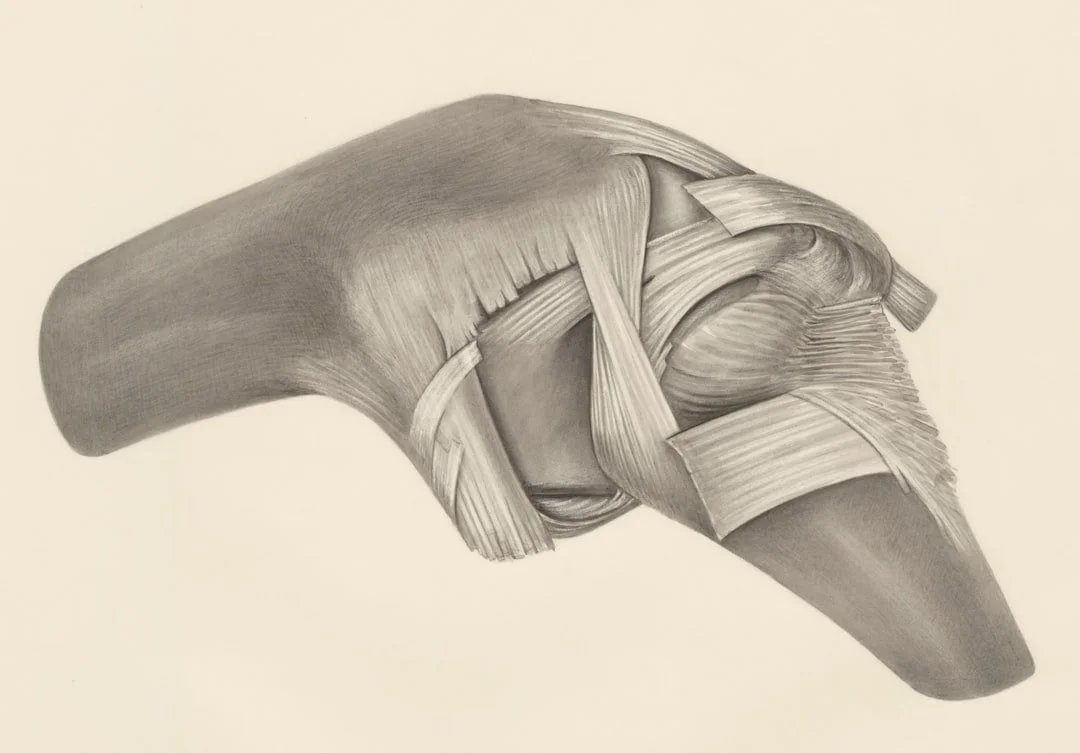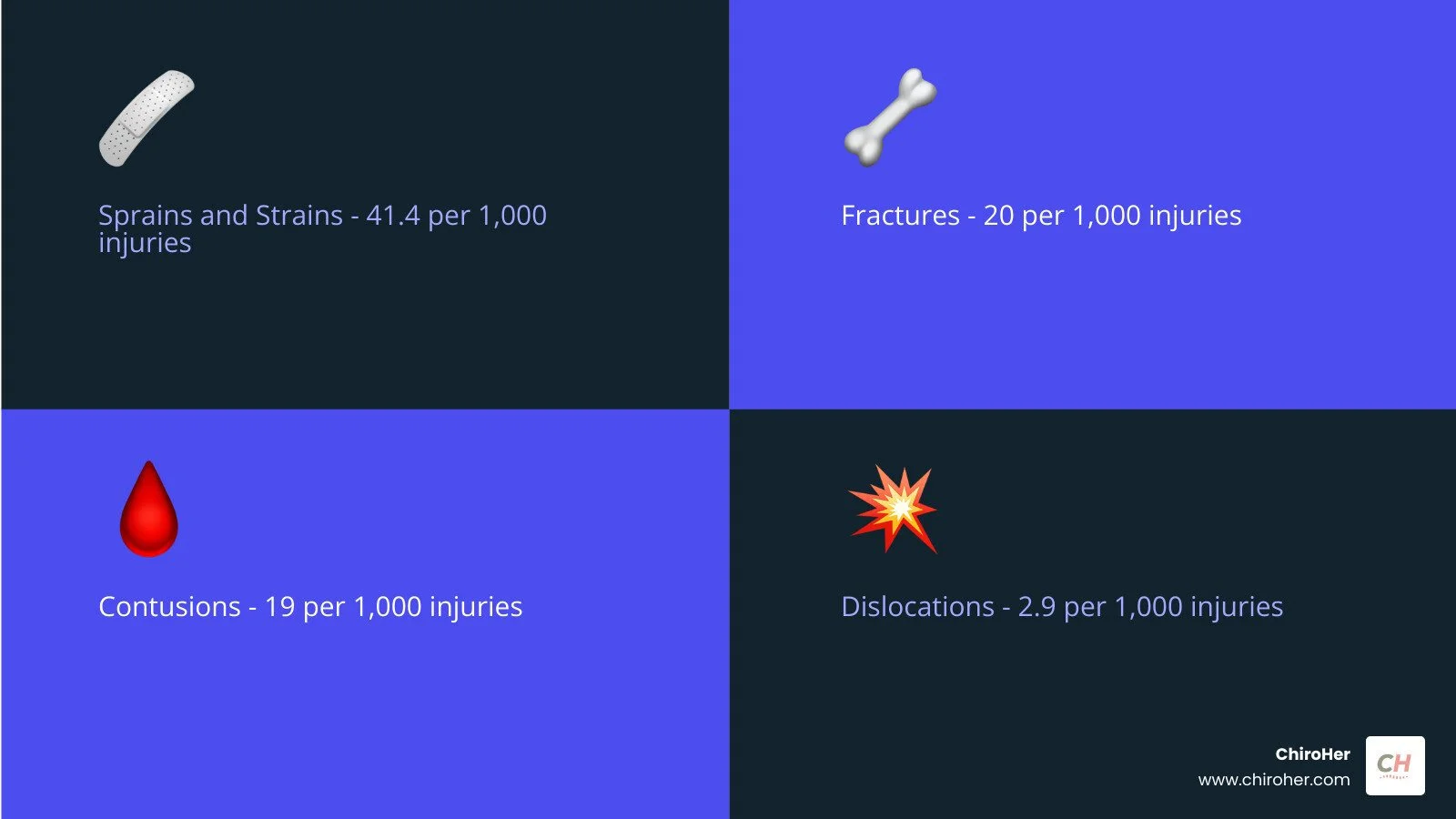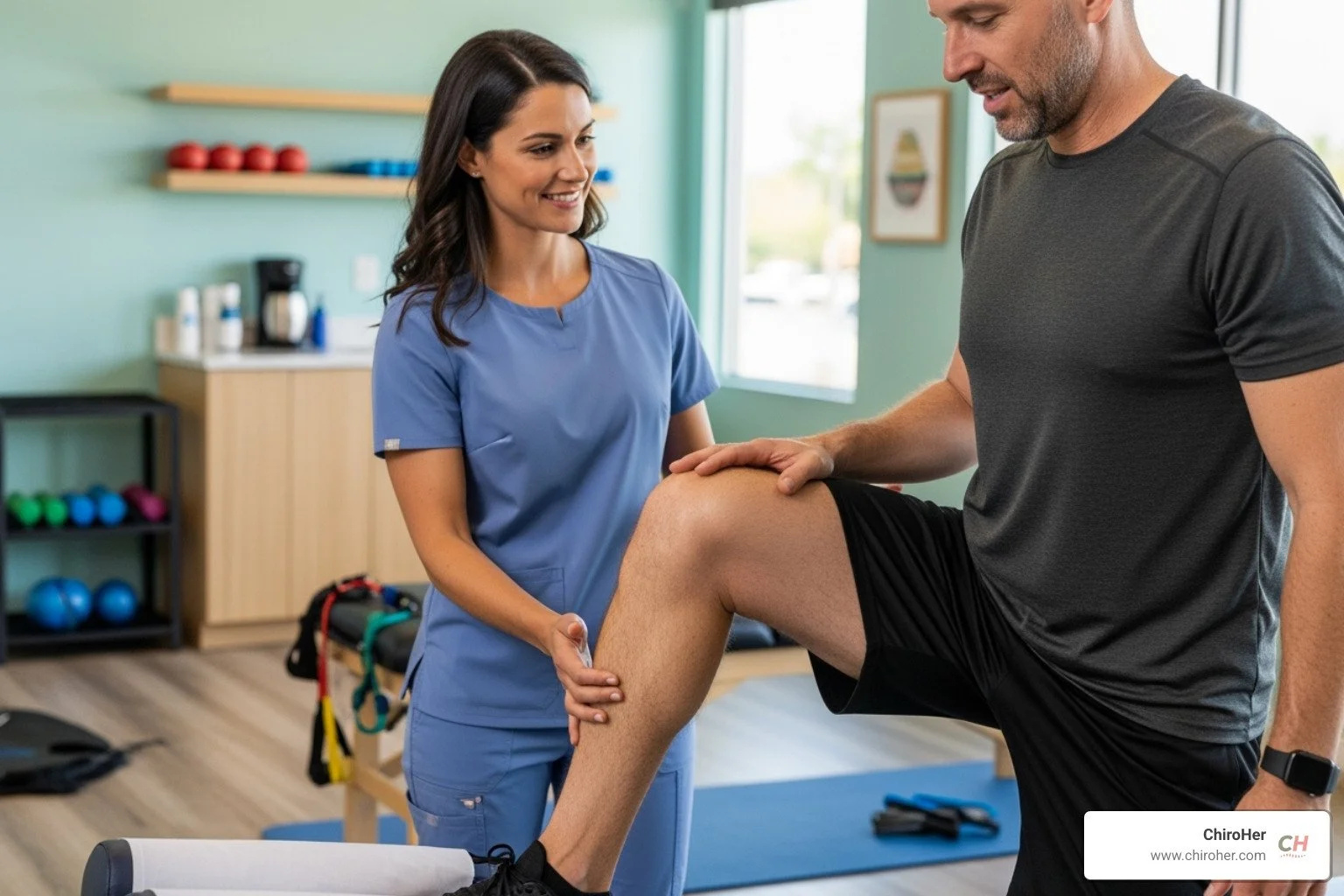Muscles, Bones, and Bruises – Oh My! Understanding the Anatomy of Sports Injuries
Why Understanding the Anatomy of Sports Injuries Matters
Understanding the anatomy of sports injury is key to effective recovery and prevention. Knowing what's happening inside your body helps you make informed choices about treatment and avoid future issues.
Most Common Sports Injuries by Frequency:
Sprains and Strains - 41.4 per 1,000 injuries (ligaments and muscles)
Fractures - 20 per 1,000 injuries (broken bones)
Contusions - 19 per 1,000 injuries (bruises and soft tissue damage)
Dislocations - 2.9 per 1,000 injuries (joints forced out of position)
Sports injuries affect your musculoskeletal system—the network of muscles, bones, ligaments, and tendons that allows you to move. Whether it's a sudden ankle sprain or nagging shoulder pain, understanding the anatomy involved clarifies your treatment options and recovery timeline.
Research suggests that up to 50% of sports injuries are preventable with the right knowledge. You don't need a medical degree to grasp the basics of how your body works and heals.
Hi! I'm Dr. Michelle Andrews. I've helped hundreds of athletes improve performance, prevent injuries, and speed up recovery by focusing on the anatomy of sports injury. At ChiroHer, I use this anatomical knowledge to provide personalized care for active women in Oklahoma City, helping them stay healthy and pain-free.
What Happens Inside Your Body During a Sports Injury
This section explains the main body structures affected by sports injuries. Understanding the difference between sudden injuries and those that develop over time is important for both recovery and prevention.
Acute and Chronic Injuries: How They Start
Sports injuries fall into two main categories:
Acute Injuries: These happen suddenly from a specific event like a fall, blow, or awkward twist. An ankle sprain from a quick pivot or a fracture from a direct impact are common examples. Symptoms like pain and swelling appear immediately.
Chronic Injuries: Also known as overuse injuries, these develop gradually from repetitive stress without enough rest. Examples include runner's shin splints or tennis elbow. They often begin as a mild ache that worsens over time. Common types are tendinitis (tendon inflammation) and stress fractures (tiny bone cracks).
Both injury types affect the musculoskeletal system—your bones, muscles, tendons, and ligaments. For more details on different injuries, see our resources on More info about types of injury.
Sprains, Strains, and Fractures: Anatomy of Common Sports Injuries
Knowing the difference between common injuries is key, as treatments vary.
Sprains: An injury to ligaments, the tough bands connecting bones to other bones. A sprain occurs when a joint is forced beyond its normal range of motion, stretching or tearing the ligament. Ankles and knees are common sites. Severity ranges from mild (Grade I) to a complete tear (Grade III). Learn more from Ankle Sprains (Mayo Clinic).
Strains: An injury to muscles or tendons (which connect muscle to bone), often called a "pulled muscle." They frequently happen in the hamstrings, quadriceps, or calves during activities with sudden acceleration. Like sprains, strains are graded by severity. See the difference at Learn the difference between sprains and strains.
Fractures: A break in a bone, ranging from a tiny stress fracture to a complete break. Acute fractures result from a single, forceful impact, while stress fractures come from repetitive force. For more information, see Bone Fractures (Cleveland Clinic).
Contusions: A bruise caused by a direct blow that crushes muscle fibers without breaking the skin, leading to discoloration and swelling.
Dislocations: Occurs when bones in a joint are forced out of position, such as a dislocated shoulder or finger. This can damage surrounding ligaments and tendons.
Understanding the specific structures involved helps create the most effective treatment and rehabilitation plan.
How Anatomy Supports Injury Prevention and Recovery
Knowing the anatomy of sports injury is a powerful tool for prevention and recovery.
Movement and Technique: Understanding how your body is meant to move helps identify faulty patterns that cause stress. Proper technique is vital to avoid overloading specific structures.
Muscle Balance: Imbalances, where some muscles are stronger or tighter than others, can pull joints out of alignment. For example, tight hamstrings can contribute to lower Back Injury.
Joint Stability: Strong muscles around a joint provide support and protect it from re-injury, especially if ligaments have been damaged. The rotator cuff muscles, for instance, are key for shoulder stability.
Targeted Rehab: Knowing which structure is hurt allows for specific exercises to heal the tissue, regain strength, and restore function, which is particularly important for any Soft Tissue Injury.
Recovery and Prevention: Steps to Stay Healthy and Active
Understanding your anatomy is a powerful tool for healing and avoiding future injuries. This section offers practical strategies for treatment, rehabilitation, and staying active so you can safely return to your favorite activities.
Treatment and Rehabilitation Approaches
The right approach depends on the injury, but common strategies include:
Immediate Care (RICE): For acute injuries, use Rest, Ice, Compression, and Elevation to manage initial pain and swelling.
Medical Treatment: Depending on severity, this may involve immobilization (casts or braces), medication for pain, or surgery for severe tears or fractures.
Physical Therapy and Rehabilitation: This phase is key for recovery. It focuses on restoring range of motion, strength, flexibility, and balance. Hands-on techniques like Manual Therapy can also improve joint function and reduce pain.
Chiropractic Care: At ChiroHer, we focus on restoring proper joint function and spinal alignment to support the body's healing capacity. Our approach to Sport Injury and Rehabilitation includes guided exercises and advice on biomechanics to promote long-term health.
Prevention: Warm-Ups, Cool-Downs, and Safe Movement
Understanding the anatomy of sports injury helps you implement smart preventative measures to reduce your risk.
Warm-Up and Cool-Down: Always warm up with light cardio and dynamic stretching to prepare muscles for activity. Cool down afterward with static stretching to improve flexibility.
Strength and Flexibility: A balanced program of strength conditioning and flexibility work makes muscles and ligaments more resilient.
Proper Technique: Using correct form for your sport's movements prevents abnormal stress on joints and tissues. This includes maintaining good habits with Correct Posture Exercises.
Use Appropriate Equipment: Wear properly fitting protective gear and footwear.
Gradual Progression: Avoid doing too much too soon. Increase training intensity and volume gradually to allow your body to adapt.
Rest and Recovery: Adequate sleep and rest days are critical for tissue repair and preventing overtraining.
Age-Related Factors: Be aware of how your body changes with age. Younger athletes are prone to growth plate injuries, while older athletes may face less flexible tendons. This awareness helps in creating prevention strategies.
Returning to Sports Safely and Maintaining Long-Term Health
Rushing back to your sport too soon can lead to re-injury. A safe return requires patience and professional guidance.
Return-to-Play Criteria: Before returning, you should have a full, pain-free range of motion, restored strength, and the ability to perform sport-specific movements without issues.
Managing Re-injury Risk: The injured area may remain vulnerable. Continue with strengthening, flexibility, and proper technique to protect it.
Long-Term Health: Improperly managed injuries can lead to chronic pain, joint instability, or early-onset arthritis.
At ChiroHer, we provide patient-focused care to support your full recovery and long-term athletic health. We are committed to helping active women in Oklahoma City, Yukon, Edmond, and surrounding areas understand the anatomy of sports injury to make informed health decisions.
We invite you to Schedule a consultation for your sports injury with us today. Let us help you get back to what you love, safely and confidently.
Building Trust: Why ChiroHer is Your Partner in Sports Injury Care
Hi! I'm Dr. Michelle Andrews. I've dedicated my career to helping athletes understand the anatomy of sports injury and return to the activities they love. With years of experience, I've seen how the right care makes all the difference.
At ChiroHer, we combine evidence-based treatment with patient education. When you understand what's happening in your body, you become an active partner in your recovery. We stay current with the latest research in sports injury management to ensure you receive care that's backed by science and addresses the root cause of your issue.
What sets us apart is our commitment to personalized, patient-focused care. In our comfortable setting, we listen to your concerns and create a treatment plan that fits your needs and goals. We are proud to serve active women throughout the Oklahoma City area, including Yukon, Edmond, Nichols Hills, Del City, Mustang, and Moore.
The information we provide is supported by trusted sources like the CDC Sports Injury Data and the American Academy of Orthopaedic Surgeons. This ensures our recommendations are grounded in solid research.
With a proper understanding of your injury and professional guidance, you can recover safely and confidently.
This article is for informational purposes only and does not constitute medical advice. Always seek the advice of a physician or other qualified health provider with any questions you may have regarding a medical condition.





